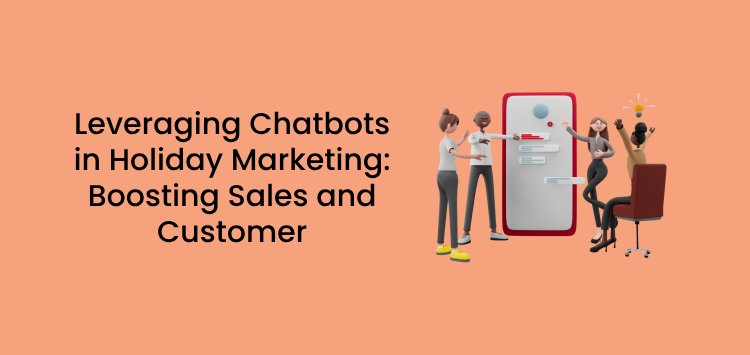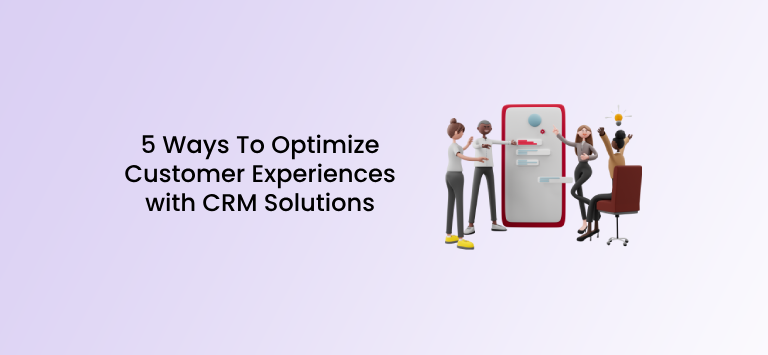Artificial-intelligence-powered virtual assistants, also known as chatbots, have become a cornerstone of modern marketing strategies. Chatbots are like 24/7 virtual customer service representatives, always ready to engage with website visitors.
They streamline communication by providing quick, relevant responses to inquiries. It’s a simple way of helping customers find products and even offering personalized recommendations.
Chatbots are designed to boost efficiency and greatly improve customer satisfaction. They’re a staff member who never sleeps and is adept at collecting valuable data and insights, enabling businesses to fine-tune their marketing efforts.
They are a powerful tool for businesses looking to engage with their audience, increase sales, and stay competitive, particularly with the holiday season around the corner.
In this blog, you’ll:
- Gain a deeper understanding and appreciation of chatbots and their types
- Learn five ways to use chatbots to boost sales and customer engagement as part of your holiday marketing strategy
What is a chatbot?
A chatbot is a computer program designed to converse with website visitors. It’s important to note that a human being doesn’t run a chatbot. Those are live chat (which have their own advantages).
Chatbots serve various purposes and are easily installed on WordPress and Shopify websites.
For example, one type is rule-based chatbots, which operate based on a predetermined set of rules and predefined responses. They respond to specific commands or keywords, making them suitable for straightforward tasks.

The earliest chatbots fit into this category — much like a children’s action figure, pre-set to speak certain phrases and sentences.
However, thanks to AI and machine learning, chatbots have come a long way. These AI chatbots can understand and respond to questions and statements in natural language, making interactions more human-like and adaptable. They learn from each interaction, becoming smarter and more proficient over time.
Chatbots can also be specialized for specific functions, such as customer support chatbots, designed to help customers with inquiries and issues efficiently.
E-commerce chatbots help users navigate online stores, find the products they want quickly, and even offer personalized recommendations. Even banks are starting to jump on this trend.

Chatbots have become an exciting feature that marketing teams are doing their best to leverage to deliver more value to customers.
5 ways to leverage chatbots for holiday marketing
Now, let’s look at five ways to use chatbots to get ahead of your competitors this holiday season.
1. Provide faster and more effective customer support
By 2023, chatbots are expected to save businesses up to 2.5 billion hours of work. One of the ways time will be saved is by revolutionizing the customer support side of things.
Customer support chatbots provide immediate assistance to customers who:
- Need answers to a specific question
- Want to know more about a product
- Have a complaint
The great thing about chatbots is that they operate around the clock. That’s music to the ears of e-commerce brands that serve customers in different time zones. Adding a chatbot to your tech stack ensures that customers can seek help at their convenience, irrespective of the time.
Many working professionals can only find time to reach out after work, which often coincides with when human staff at an organization tend to clock off. Chatbots leverage pre-programmed responses. That way, they offer consistent and accurate information on various topics, from product details to account inquiries.
And what’s better is they can handle multiple customer queries simultaneously, minimizing wait times and optimizing response efficiency.
In cases where a chatbot can’t solve some of the more complex tasks, it can seamlessly transfer the conversation to a live customer support agent. The result? A smooth transition and continued assistance.
Here’s a great example from Olipop that uses chatbots for tracking and managing orders and live support for more complicated requests.

And if human support is offline, a chatbot can collect a customer’s contact details and offer the reassurance that someone will be in touch the following day.
There’s nothing quite as frustrating for a customer as finding no way of getting in touch — especially when they’re shopping for last-minute Christmas gifts.
Thankfully, chatbots contribute to operational excellence by increasing efficiency and enabling businesses to deliver a high level of service during peak holiday periods.
2. Generate hot leads with AI-powered insights and personalization
What if a chatbox could go beyond merely regurgitating basic information like opening hours, holiday closures, and order statuses?
Well, you’re in luck. Today’s chatbots can capture leads while human staff rest and recuperate for the busy order fulfillment process.
The customer enters traditional chatbot conversations because they have something to ask or have an urgent need. But what if someone has come to “just browse”? How do you maximize the chances of turning a cold lead into a buyer?
Chatbots can seize this opportunity to engage with visitors proactively.
They can start conversations, inquire about holiday preferences, and guide users to relevant products or services, which can prompt the customer to purchase.
Even if the customer doesn’t make a purchase, the chatbox can collect their information and, with the help of other AI marketing tools, amplify holiday sales and customer engagement.
These sophisticated AI tools gather and analyze data to offer personalized experiences for every customer.
Imagine a shopper looking for the perfect holiday gift. AI marketing tools analyze the shopper’s browsing behavior, previous purchases, and even their interactions with the chatbot.
With this data, you can now send personalized product recommendations, and special holiday discounts are delivered to the shopper. It makes for a quick, convenient shopping experience (tailored to their preferences).
3. Cart abandonment recovery
Chatbots can re-engage with customers who have abandoned their shopping carts in various ways. Let’s dive into it.
Immediate reminders
Chatbots can send automated messages to customers shortly after they abandon their carts. It’s a great way to remind them of the items left behind. These timely reminders can bring customers back to complete their purchase while their intent to buy is at its strongest.
Personalization
Chatbots can personalize cart abandonment messages by mentioning the products left in the cart and even offering special discounts or incentives to encourage purchases.
Customer inquiry
By asking customers why they abandoned their carts, chatbots can gather valuable feedback. This information can help businesses identify and address common pain points in the checkout process.
Assistance and support
If customers encounter any issues during the checkout process, chatbots can provide instant assistance. They can answer questions, resolve concerns, and guide customers through the remaining steps, reducing friction and increasing the chances of conversion.
Recovery offers
Chatbots can offer incentives such as free shipping, discounts, or limited-time promotions to entice customers back to their carts. These offers can be automatically triggered based on specific conditions or customer behavior.
E-commerce brands are leaving $18 billion on the table yearly due to cart abandonment. Use chatbots to reclaim a piece of this tidy sum!
4. Become a customer’s personal shopper
The internet and the age of Amazon Prime and the like have made us an impatient bunch.
Companies that want to get ahead of their competition must help people find and buy what they want as easily and quickly as possible.
When customers land on a website, chatbots begin conversations, aiming to comprehend the customer’s unique shopping requirements. Through a series of interactive questions, chatbots delve into customers’ preferences to help them discover products.
Sephora is a popular brand that puts this method to good use. Why not take a page out of their book?

Whether customers seek information about product specifications, availability, or even sizing, chatbots swiftly provide precise answers. This convenience removes the hassle of customers having to search for details independently.
Moreover, chatbots can also help your customers compare products so they can make informed buying decisions.
By simplifying the shopping journey and making it more convenient, chatbots enhance the overall customer experience and boost sales and customer engagement.
This positive experience works wonders for your search engine optimization (SEO). The result? A boost to your search rankings and more organic traffic to your site. What’s not to love?
5. Appointment scheduling
Imagine a business that runs a spa and wellness center gearing up for the holidays. As the holiday season approaches, the spa experiences a surge in appointment requests for holiday-themed treatments and relaxation packages.
Visitors to your website can engage with the chatbot, which triggers a conversation by asking if they’re interested in booking holiday spa sessions.
Customers can then specify their preferences, such as the type of treatment, preferred date and time, and any specific therapists they prefer.
The chatbot, armed with real-time availability data, offers suitable appointment slots tailored to each customer’s needs.
Once an appointment is confirmed, the customer receives the booking details and a holiday-themed message to enhance the festive spirit.
If a customer needs to reschedule due to unforeseen holiday plans or other commitments, an AI-powered chatbot seamlessly handles the request, suggesting alternative slots.
For serviced-based holiday offerings, minimizing appointment disruptions is crucial. Thanks to chatbots, customers can:
- Book a slot as fast as possible.
- Easily change their slot, should they need to.
- Effortlessly cancel their slot, making it available for others.
In this way, the chatbot efficiently manages the surge in holiday appointment requests. It’s the ideal solution for helping any type of service-based business to accommodate more customers.
That way, you can increase holiday sales and deliver exceptional holiday experiences without overwhelming your staff with administrative tasks.
Use chatbots for holiday marketing this season
Chatbots are the unsung heroes of modern marketing, especially during the holiday season.
They’re not just virtual assistants — they’re 24/7 customer engagement and sales-boosting mechanisms.
Chatbots streamline communication, provide quick and relevant responses, and offer personalized recommendations. The best part? All of this happens simultaneously while you collect valuable data to help you fine-tune future marketing strategies.
During the holiday rush, chatbots prove invaluable. You keep your employees focused on their tasks at hand while providing the best possible experience for your customers.
So, as technology advances, integrating chatbots will be one of several marketing strategies businesses need to increase sales this holiday season.
If you’re ready to put a live chat to use, Chatway is here to help. It’s a simple and easy way to deliver excellent customer service without a major website overhaul.
Author Bio:

Ryan Robinson is a blogger, podcaster and (recovering) side project addict who teaches 500,000 monthly readers how to start a blog and grow a profitable side business at ryrob.com.









